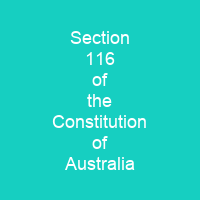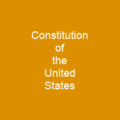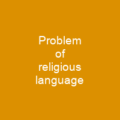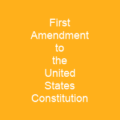Understanding Section 116: The Heartbeat of Religious Freedom in Australia
Section 116 of the Australian Constitution is like a silent guardian, watching over our religious freedoms with an unwavering eye. It’s a clause that has been around since 1901 but often goes unnoticed until it’s needed. Have you ever wondered what this section means and how it affects your daily life?
The Birth of Section 116
Imagine the Constitution as a newborn baby, and John Quick and Paddy Glynn as its parents. They wanted to ensure that God’s presence was recognized in their child.
Section 116 is based on two American constitutional principles: the First Amendment’s ban on establishing religion and Article VI, Section 3’s prohibition of religious tests for public offices. It’s a bit like having a rulebook for your favorite game, but instead of rules, it’s about protecting something as precious as freedom of belief.
Interpreting Section 116: A High Court Journey
The High Court has had its fair share of debates over the years. They’ve looked at three main areas under Section 116:
- Definition of ‘religion’: The court defines it as requiring belief in a supernatural being or principle, with specific criteria.
- ‘Law for establishing any religion’: This has been interpreted narrowly. Laws that benefit one religion do not contravene Section 116.
- ‘Law for prohibiting the free exercise of any religion’: The protection of the free exercise of religion was also narrowed by early High Court judgments, but it’s still a crucial part of our legal framework.
The court has never ruled a legislative provision to be in contravention of Section 116. It’s like having a safety net that catches you when you fall, but rarely gets used because the net is so strong and reliable.
Protests and Referendums: A Test of Will
Imagine trying to change a long-standing rule in your favorite game. That’s what federal governments have attempted with Section 116.
Federal Governments proposed amendments to include state laws, but both attempts failed in referendums in 1944 and 1988. The section applies only to federal laws, with states having their own constitutions that may address similar issues. It’s like having a rulebook for your game, but each player can have their own set of rules too.
Protestant churches in New South Wales and the Seventh-day Adventist Church had different views on the Constitution’s role for religion. The Seventh-day Adventists sought strict separation from church and state, while Protestants believed divine providence should be a source of law. It’s like having two teams with different strategies but both aiming to win.
High Court Judgments: Narrow Interpretations
The High Court has considered three areas under Section 116:
- Definition of ‘religion’: The court defines it as requiring belief in a supernatural being or principle, with specific criteria.
- ‘Law for establishing any religion’: This has been interpreted narrowly. Laws that benefit one religion do not contravene Section 116.
- ‘Law for prohibiting the free exercise of any religion’: The protection of the free exercise of religion was also narrowed by early High Court judgments, but it’s still a crucial part of our legal framework.
The court has never ruled a legislative provision to be in contravention of Section 116. It’s like having a safety net that catches you when you fall, but rarely gets used because the net is so strong and reliable.
Failed Referendums: A Lesson in Democracy
Imagine trying to change a long-standing rule in your favorite game. That’s what federal governments have attempted with Section 116.
Federal Governments proposed amendments to include state laws, but both attempts failed in referendums in 1944 and 1988. The section applies only to federal laws, with states having their own constitutions that may address similar issues. It’s like having a rulebook for your game, but each player can have their own set of rules too.
Protestant churches in New South Wales and the Seventh-day Adventist Church had different views on the Constitution’s role for religion. The Seventh-day Adventists sought strict separation from church and state, while Protestants believed divine providence should be a source of law. It’s like having two teams with different strategies but both aiming to win.
The failure can be attributed to the determined opposition of senior Liberal Party politician Peter Reith and Australia’s notorious reluctance to support Constitutional referendums. It’s like trying to change the rules in a game that everyone is used to playing, and not everyone wants to play by new ones.

Section 116 is a silent guardian, watching over our religious freedoms with an unwavering eye. It’s like having a safety net that catches you when you fall, but rarely gets used because the net is so strong and reliable. The High Court has interpreted it narrowly, leading to few challenges to laws under its scope. While some scholars argue for a broader interpretation, others defend the current narrow interpretation as consistent with the Constitution’s intent.
You want to know more about Section 116 of the Constitution of Australia?
This page is based on the article Section 116 of the Constitution of Australia published in Wikipedia (retrieved on November 30, 2024) and was automatically summarized using artificial intelligence.







